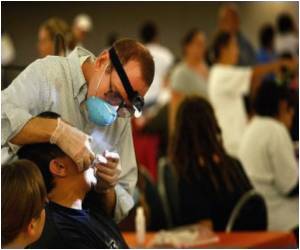 |
| Dental Filling |

The Bisphenol A (BPA) in dental filling could pose a danger to your health, US researchers have found. But they are suggesting continued use of dental sealants as their benefits could far outweigh risks. BPA, a man-made chemical, is found in a variety of everyday items - and in most humans, according to a new Canadian study. It is used to stiffen plastic bottles, line cans and make smooth paper receipts.

Following a query from a mother on the safety of the sealants, pediatric endocrinologist Abby F. Fleisch, MD, and colleagues at the Children's Hospital, Boston, performed an exhaustive review of the scientific evidence. They came to two conclusions:
BPA does indeed form in the mouth after some dental sealants and fillings are applied. BPA can be found in the saliva three hours after dental work is completed. It's not at all clear whether this poses a health risk.
 Posted in: BPA In Dental Filling Poses Danger
Posted in: BPA In Dental Filling Poses Danger 2:35 PM
2:35 PM
 Current Latest Health News International
Current Latest Health News International








1 comments:
I totally agree. That also shows your readers you care about them and what they have to say. If there is a good conversation going on in the comments, it also tells your readers that it is okay to add their thoughts.Dental Advertising
Post a Comment